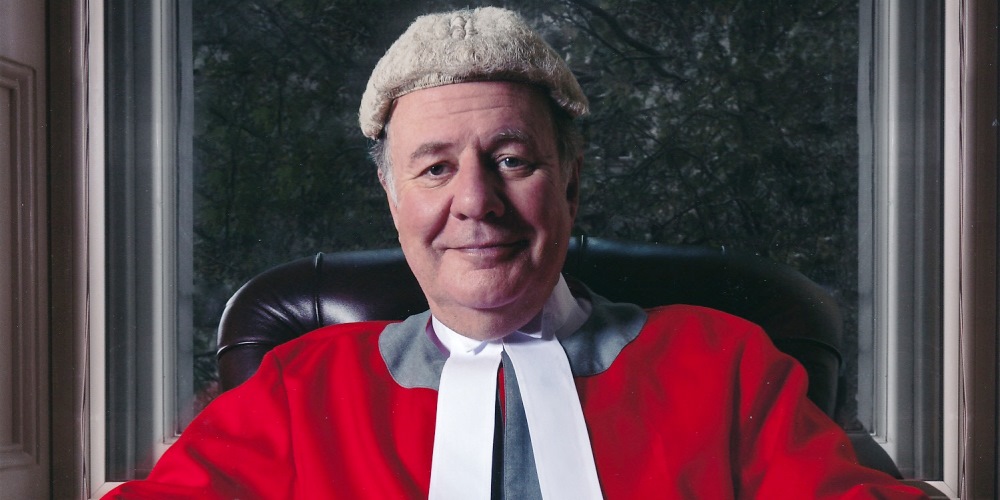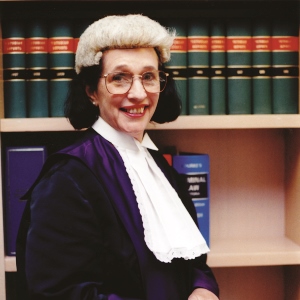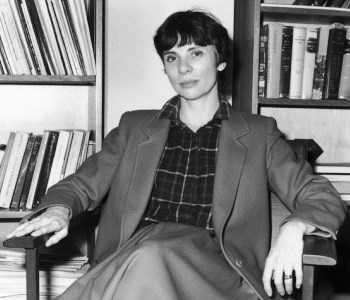The Supreme Court Prize, created by the judges of the Supreme Court in 1891, is awarded each year to the highest performing law student of the year. In this edition of MLS News, we profile three recipients of the prize who went on to become senior members of the judiciary.
Justice Philip Mandie QC (1964)

Philip Mandie grew up in a progressive Jewish household in Elsternwick in the 1950s. His parents, born in London, had come to Australia as teenagers. He attended Wesley College, "a traditional but very tolerant boys' school," and, with a love of reading, was a natural scholar who graduated as Dux of Humanities.
In 1960 he enrolled in Arts/Law at the University of Melbourne and the environment fuelled his passion for politics, philosophy and later, law.
While the Arts was his passion, "the Law School was more friendly and felt like a group endeavour", and Mandie enjoyed the rigour of the Socratic teaching method of fostering critical thinking employed in law lectures at the time. He recalls Professor Peter Brett, who taught criminal law and administrative law, as a significant influence.
Awarded the Supreme Court Prize in his final year, Mandie says ,"it enabled me to win a scholarship to Yale Law School and travel with my wife – a great academic adventure and life experience".
But he had to get his articles first and while a staff member suggested he look in the Yellow Pages, "a new senior lecturer, Clifford Pannam, suggested the firm where I went." It was Russell, Kennedy and Cook.
After Yale, he returned as a solicitor and soon after went to the Bar, which was "exciting, very competitive, with much more work to go around than now".
He became a QC in 1983. In 1994 he was appointed to the Supreme Court of Victoria where he served in the Trial Division until 2009, when he was elevated to the Court of Appeal, remaining there until his retirement in August 2012. He continues to sit as a reserve judge. "The Bar and Bench is a wonderful career but legal knowledge is more than ever of great value in many positions throughout society."
Justice Rosemary Balmford AM (née Norris) (1954)

Her father, Sir John Norris, a Supreme Court Prize recipient himself in 1923, and mother, Dame Ada, a celebrated advocate for women's rights, met as students at the University of Melbourne in the 1920s. From an early age, Rosemary and her sister, Jane, knew they would tread a similar path.
"The horror that would have been if you decided not to," she says.
So in 1951 when she arrived at the Law School, where fewer than 10 percent of her fellow students were women, it was the start of a very low-key, high profile legal career. "We weren't treated any differently from the men," she says.
One difference, however, was "going from a girls' school to an institution that had two genders", and that "was fun".
The work was interesting too. "Zelman Cowen was a great teacher," and the hard-working student who always did well was "pleased" to receive the Supreme Court Prize.
Articles came via her father. "One weekend I was sitting at home sewing flags for the Girl Guides and a solicitor friend said I could come to his firm and do articles - so a couple of years later off I toddled to Whiting & Byrne [later incorporated into Corrs Chambers Westgarth]."
In 1955 she was the first female solicitor at the firm and approached the job with typical aplomb. "I knew I was doing something for the first time, it was obvious, but there had always been a small number of women going through, so it wasn't dramatically new." In 1957 she became the first female law lecturer at Melbourne Law School.
She spent 10 years at Whiting & Byrne, got married, had a child and worked from home - "the firm was very tolerant about it" - before leaving to complete her MBA and going on to become the first executive director of Leo Cussen in 1971. She later worked as the University of Melbourne's office solicitor, joined the Administrative Appeals Tribunal (AAT) and learned "how to run a hearing". In 1993 she was appointed to the County Court and in 1996 was the first woman appointed to the Supreme Court of Victoria.
Reflecting upon her career, she says: "There weren't really many women barristers at the time and judges were all chosen from the Bar, so naturally the decision not to go to the Bar, was a decision not to become a judge.
"However, you never know what is going to happen."
"I enjoyed being a judge – I had 20 years of sitting at that end of the room and that was fun."
Justice Marcia Neave AO (née Forster) (1965)

A wilful student at Presbyterian Ladies' College in the late 1950s, she "liked schoolwork but hated school," and, at her mother's suggestion, enrolled in the LLB.
In 1962, with only about 12 percent of law students women, she fell in love with the course and excelled. "I enjoyed it, found it really interesting and had a talent for it".
"My Introduction to Legal Method teacher Frank Maher was very kind and I was also taught by Sir Zelman Cowen."
A joint winner of the Supreme Court prize for 1965 (together with Mark Leibler AC), she recalls, "I really wanted it and worked for it, so I was very pleased when I got it." Despite her academic success, getting articles was a different challenge.
"A family solicitor approached Oswald, Burt & Co and asked if they would take me but they said they didn't have any toilets for women."
They later relented but when Sir Zelman offered her a role at the University she happily returned to the academic fold, which nurtured her emerging career that really began when the first edition of Property Law: Cases and Materials (with Ron Sackville) was published by Butterworths in 1971.
Promoted to a position as senior lecturer, Justice Neave's interest in policy work led to high-profile roles in the NSW and Victorian State Governments. In 1986 she was appointed dean of Adelaide Law School and in 2000 became the chair of the Victorian Law Reform Commission – but her trailblazing didn't end there. In 2006 Professor Marcia Neave became the second woman appointed to the Court of Appeal of the Supreme Court of Victoria.
"I believe in the capacity of women to do well and I have never been frightened of trying," she says.
Images:
Top: Justice Philip Mandie, Credit: Courtesy of Justice Mandie
Centre: Justice Rosemary Balmford, Credit: Courtesy of Justice Balmford
Bottom: Justice Marcia Neave, Credit: University of Melbourne Archives